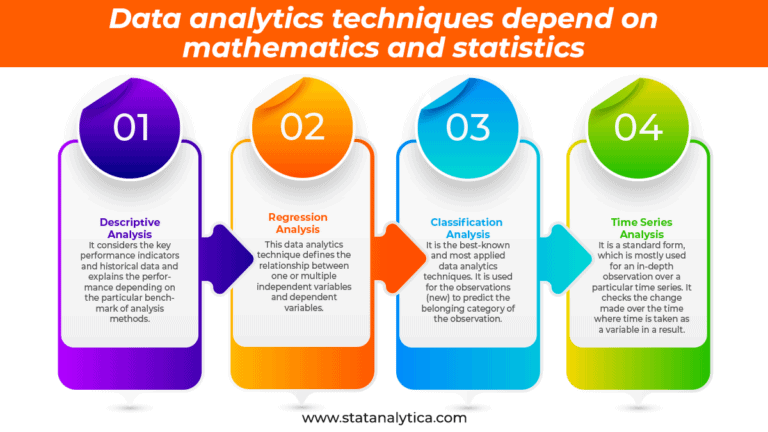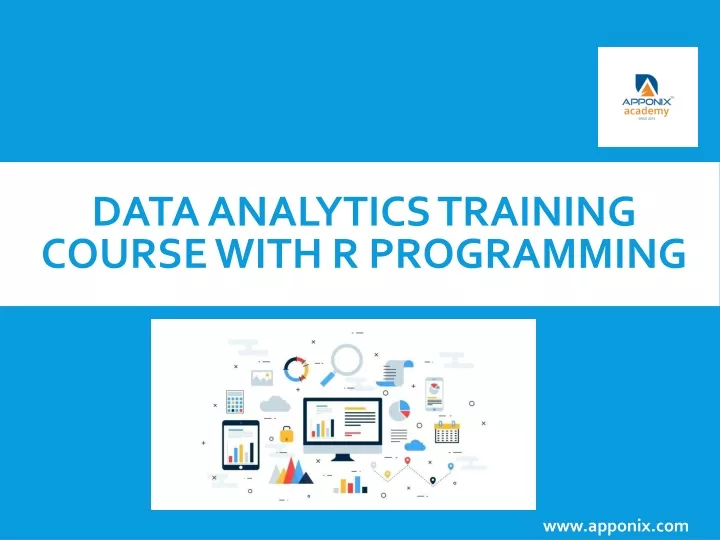

- #Basic data analytics methods using r how to
- #Basic data analytics methods using r install
- #Basic data analytics methods using r software
- #Basic data analytics methods using r code
*.rdata - A file containing one or more R objects or workspaces.Can be created using saveRDS() and loaded using readRDS(). We recommend reading this tutorial, in the sequence listed in the left menu. What file types are typically associated with R? How you can use R to easily create a graph with numbers from 1 to 10 on both the x and y axis: plot (1:10) Result: Try it Yourself ».
#Basic data analytics methods using r code
Packages for literate statistical programming - weaving written reports, output, analysis code in one document. Availability of advanced statistical methods and algorithms published as user-created packages. Once you create an object, it should appear in the RStudio Environment pane. In the script editor, issue the code x <- 5 to create our first object. Data are assigned to and stored in objects using the <-or operator. Available for Windows, Macintosh, and Linux. R stores both data and output from data analysis (as well as everything else) in objects. #Basic data analytics methods using r install
RStudio does not replace R: You must install R before you can install or use RStudio.

3) Example 2: Return Column Names of Data Frame Using names () Function. 2) Example 1: Print First Six Rows of Data Frame Using head () Function. Table of contents: 1) Loading Example Data.
#Basic data analytics methods using r how to
It also offers an Import-Wizard-like feature that allows users to import CSV, Excel, SAS (*.sas7bdat), SPSS (*.sav), and Stata (*.dta) files into R without having to write the code to do so. In this R tutorial you’ll learn how to explore a data frame using different exploratory data analysis techniques. This course introduces you to sampling and exploring data, as well as basic probability theory and Bayes rule. Its interface is organized so that the user can clearly view graphs, data tables, R code, and output all at the same time. RStudio is a free, open source IDE (integrated development environment) for R.
#Basic data analytics methods using r software
For this, commands such as cor() can be used.R is a free, open source software program for statistical analysis, based on the S language.
Relationships among Features: You may want to understand relationship that exists between different features. R stores both data and output from data analysis (as well as everything else) in objects. Visualize Relationships & Data Patterns:You could one or more plots such as hist(), plot etc to identify the data pattern and also, relationship between different features. This procedure is also termed as holdout method. The training dataset is used to generate the model, which is then applied to the test dataset to generate predictions for evaluation. Training & Test DatasetsFor preparing data for actual analysis, one may want to identify the sample datasets for training and test purpose. R Basics EDA, which comes before formal hypothesis testing and modeling, makes use of visual methods to analyze and summarize data sets. For nominal data, command such as table() comes very handy. This week reading assignment is the course textbook chapter 2 (EMC Education Service (Eds). through examples that demonstrate the use of R for a range of types of data manipulation, graphical presentation and statistical analysis. How to perform operations in R including sorting, data wrangling using dplyr, and making plots. Steps involved in data analysis: The process of data analysis would include all these steps for the given problem statement. Observe Data Observations & Features:Commands such as summary() comes very handy to explore the spread of the data across different features. Explain Data Analytics LifecycleDiscuss the Basic Data Analytics Methods Using R:Understand the Basic Concepts of Classification, Clustering and Association Algorithms:1. Foundational R programming concepts such as data types, vectors arithmetic, and indexing. Studying Data FrameStudy the data frame exploring different observations and features. Exploring Data Types:Identify which data is numeric and which of them are nominal (stringsAsFactors option) and import the data appropriately. If this article was useful for you, please consider giving this article a like and share this with friends and/or colleagues. 
You can find the code of this article on my GitHub in the form of a Jupyter Notebook: Link. Data Loading:Load the data into the tool. So that was it for this part: basic data analysis techniques every data analyst should know, using Python.Following are some of the steps you would want to perform in this step: The next step is to explore the data and prepare it for further analysis. This chapter introduces the basic functionality of the R programming language and environment.







 0 kommentar(er)
0 kommentar(er)
